& Construction

Integrated BIM tools, including Revit, AutoCAD, and Civil 3D
& Manufacturing

Professional CAD/CAM tools built on Inventor and AutoCAD
17 min read
V.2.0.4854
October 19 Update fixes the following issues:
V.2.0.4801
“A must see – 2 thumbs up!” – a self-proclaimed YouTube-obsessed critic
[toc]

Previously, Generative Design in Fusion 360 meant that you clicked on the “Generate” button in toolbar and it took you to a separate app experience where you did all your setup and definitions there. Once you were happy with a result, you had to export your results out and bring it back into Fusion 360.

Now when you access your workspace switcher (as a commercial subscriber), you’ll see a new workspace called Generative Design. This is where you can perform all your Generative Design related workflows, define constraints to explore iterations. Once you’ve selected the result you want to keep, save it, bring it into the Model workspace, and start cleaning it up with T-Spline editing tools in the Sculpt environment, without leaving the software even once.

And yes, now that Generative Design is a workspace, it works natively on macOS as well.
Edit Model

Inside the Generative Designs workspace, you’ll have access to the Edit model workflow. This experience is just like the Simplify workflow in the Simulation workspace. You will be able to make the necessary tweaks to your design or create your design space geometry without changing your original design model.
Design Space, Constraints, Loads, and Objectives

The Design Space and design conditions are just the beginning of what you are telling the Generative Design solver to help you develop a design. Simply put, Preserve Geometry let’s you tell Fusion 36y0 where you must have material in your design, Obstacle Geometry is where you absolutely cannot have material and the Starting Shape (if you want to use one) will point the Generative Design solver in a certain direction. The design conditions represent how the design will work, i.e. where is it held and how hard are you going to push on it. Lastly, the Objectives will allow you to tell the system how strong your design needs to be.
Manufacturing Recommendations

What’s so smart about Generative Design is that it is manufacturing process aware. Now that it is Fusion 360, it can recommend outcomes based on advanced additive or 3 and/or 5 axis milling processes considerations.

Explore your options
Previously you explored your options in a separate Generative Design window. Now you do it in Fusion 360 by accessing it through the Explore icon in the toolbar. The same tools, filters, and result view types will be there for you to toggle through.



Resources to help you get started
This stuff goes pretty deep, and that’s why we have a bunch of content and training out there on how to work with Generative Design, best practices, as well as workflow pro-tips. Check out the Generative Design Help pages as well as these ongoing online webinars and onsite workshops, lead by our cracking team of Generative Design experts (you may recognize some of them, since they are YouTube all-stars as well).



One of the main benefits of Generative Design being inside Fusion 360 is that the outcomes you chose to work with are fully editable with the modeling tools available in Fusion 360. It’ll come in as a T-Spline body and appear right in your parametric timeline. From there, you can edit the T-Spline with all the Sculpt tools at your disposal.


We’ve also added a tool that gives you the ability to select an area of the T-Spline body that may be overly complicated/not that important to the overall integrity of the part, erase the area, and fill it with faces that are more logical to the selected area with a Reduced Star or Fill Star.

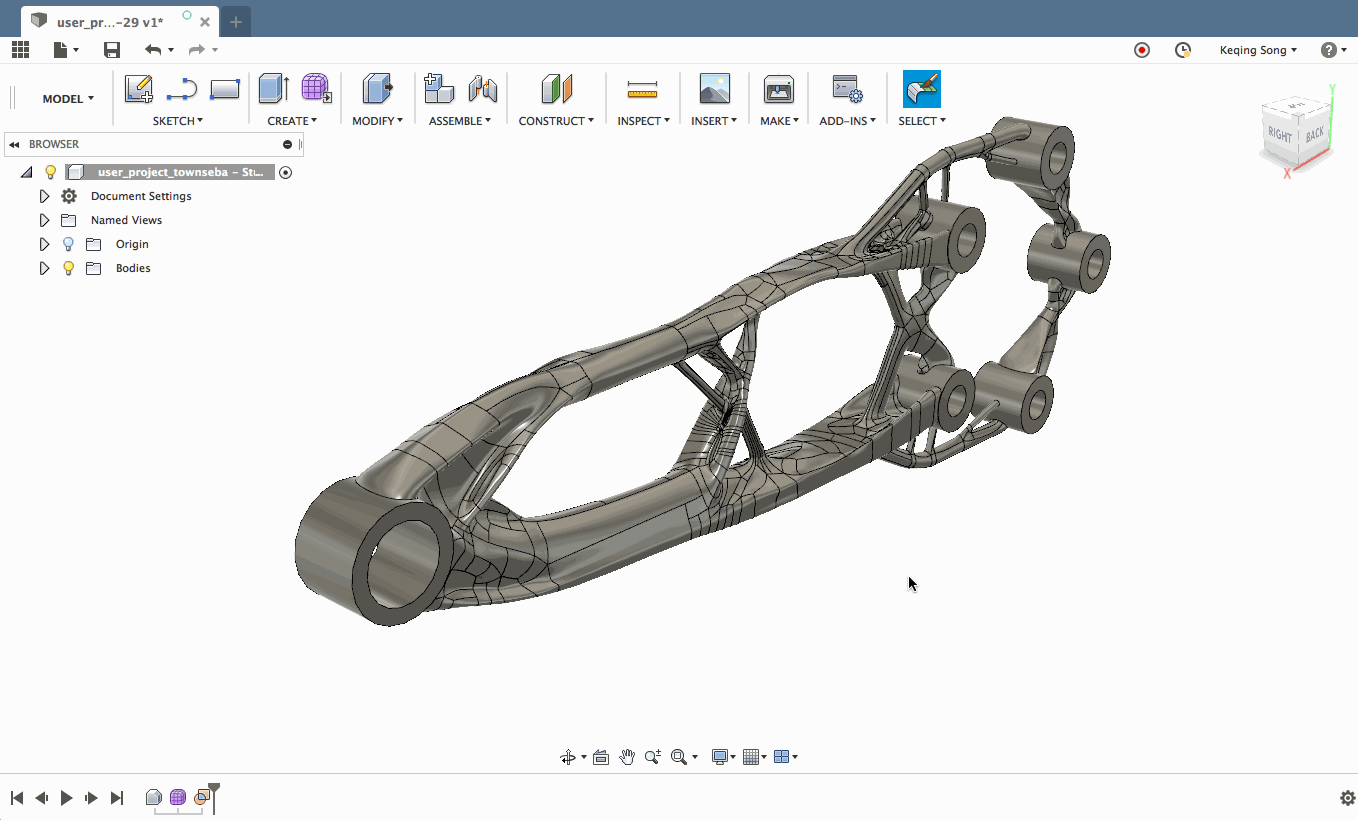


Now when you’re in Edit Form, you can also re-orient the manipulators in the direction of a selected strut or pipe, so that editing geometry becomes more predictable. Under the Coordinate Space option, you’ll see a new mode called “Selection Space”, next to “Local Per Entity”.

Selection Space transforms selected objects as a group in the direction of the axis of the manipulator. Local Per Entity transforms each of the selected objects locally, relative to the direct of the axis of the manipulator. There’s no special command for this to happen – just toggle the re-orient option in the floating dialog and the manipulators will naturally snap to the most logical direction.


This handy selection tool enables you to select a strut or a tube that starts from one side and terminates (unevenly) at the other side. Instead of selecting each face individually (and painfully), hit CTRL+H (ALT + H for Windows) and voila, the whole strut is selected.
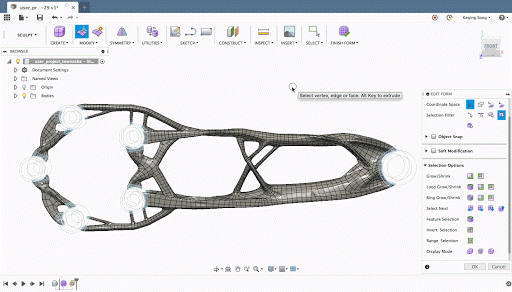
This is a new powerful workflow that has a ton of advantages, and sets us up for future projects. Consider this: today if you insert a design into another design, you can’t edit the inserted design unless you “break link”, which in that case, all associativity to the original is lost. This means that if the original design changes for whatever reason, you will not be able to update the inserted version and will have to manually do the change since the link has been broken.
Here’s an example of how Derive shines
Bryce showed a great example (in the video embedded above) of how all of this can benefit your manufacturing workflow. Say that you’re working in a team where you’ve been tasked to go cut out an sheet metal enclosure. The flat pattern designs exist in separate projects, but with derive, you can perform an Insert Derive, grab the appropriate parts from each project, and organize them in the correct layout for 2D cutting in your own derived document.



Once you’re happy with the layout, create the tool-paths, and then simulate them to make sure everything is in good shape for physical cutting.

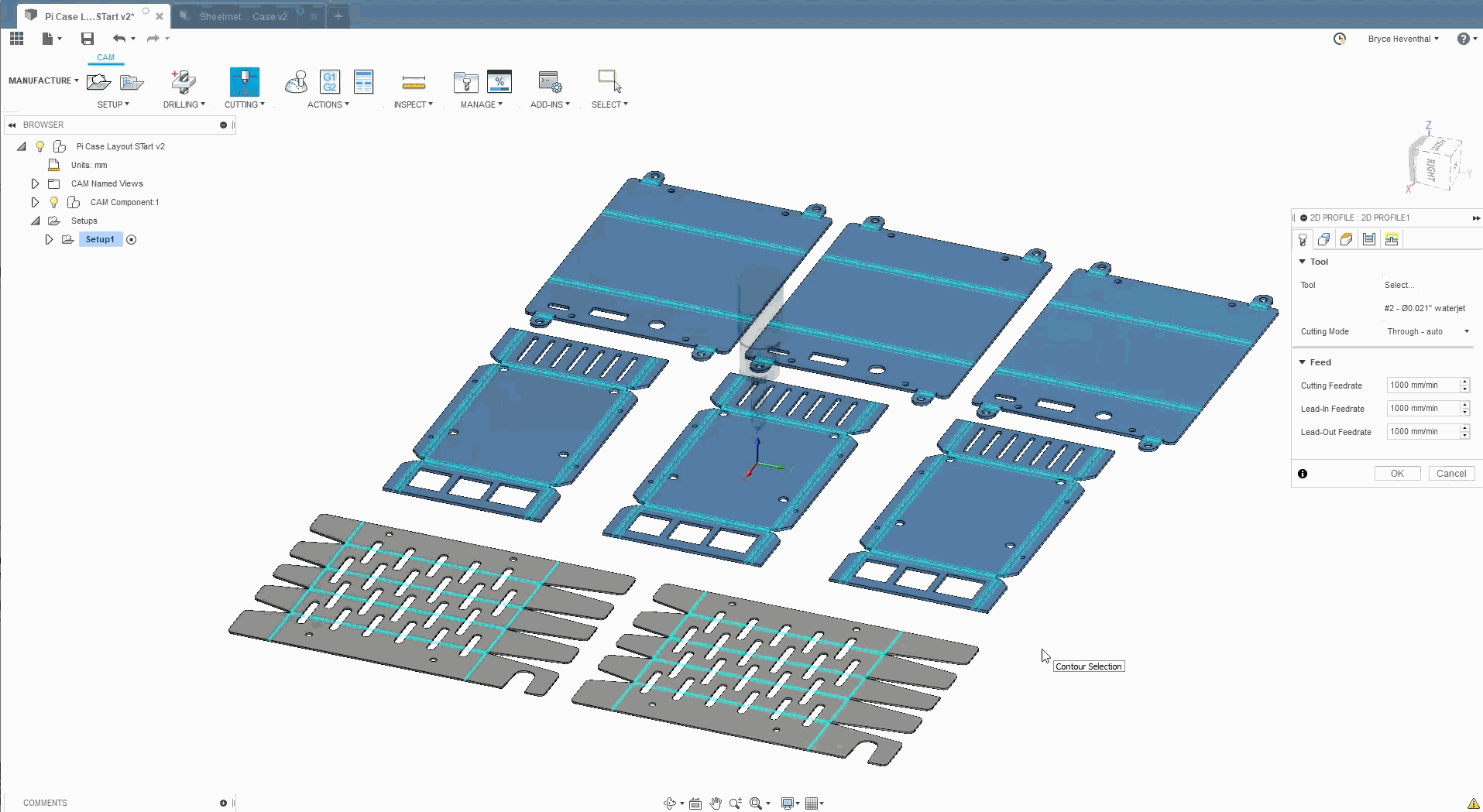
Changes Are Inevitable
Let’s face it, design changes will always happen. Here’s where Derive really shines. If a change is made to any of the sheet metal parts, your derived flat patterns are associatively linked to the source, which means all you have to do get the change updates is a simple click-of-a-button. Your layout updates, your tool-paths update, and all is dandy in the world.
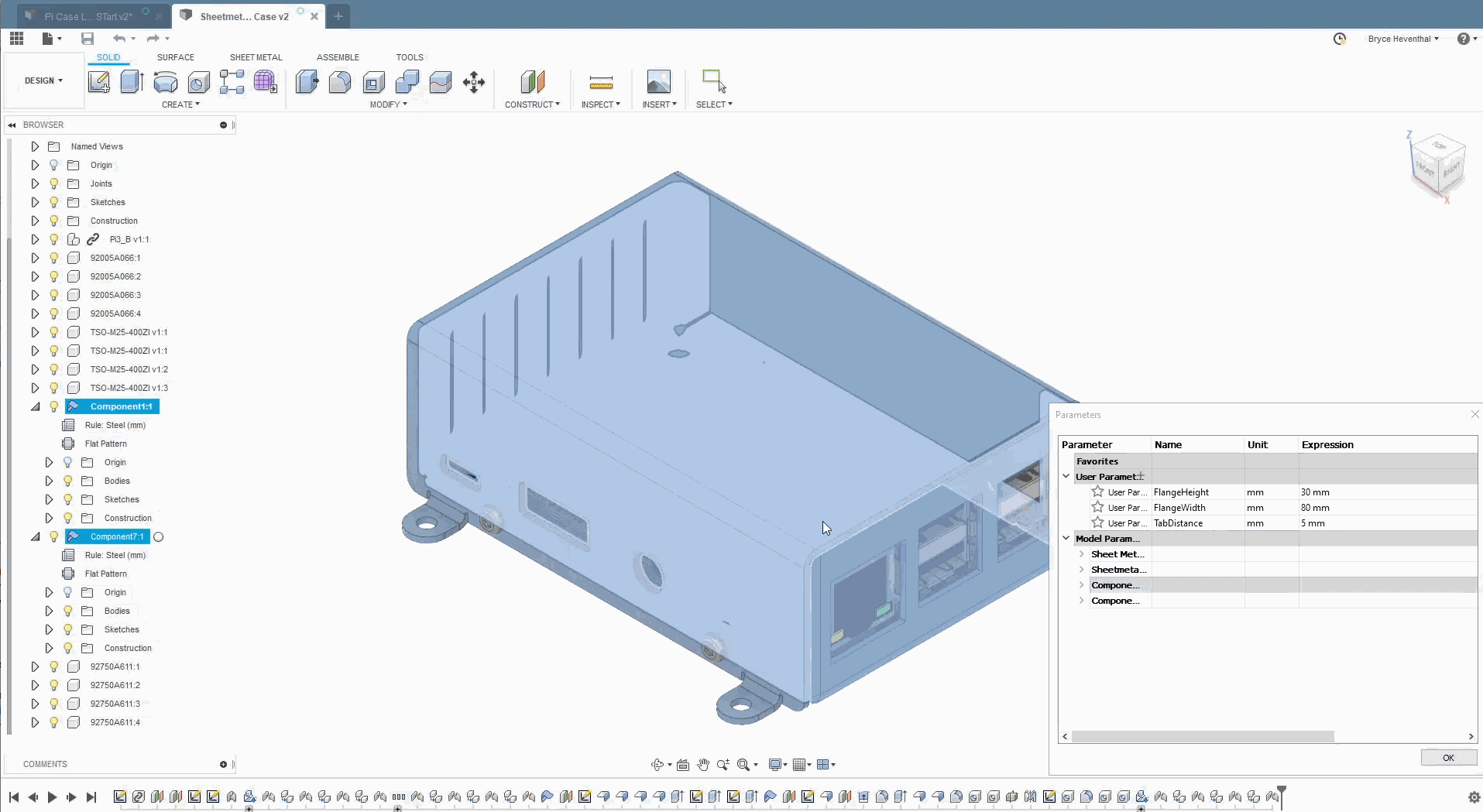
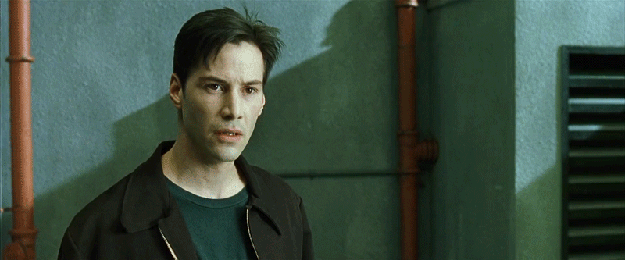
Driven Designs let’s you derive bodies, components, sub-assemblies, sketches, construction geometry, joints, sheet metal flat patterns and even parameters. You can derive them from one project and insert into/create a new project with the derived part in them, while maintaining associativity with the original design. Best of all, you can also edit the derived part without affecting the original while associativity is maintained.
So how do you do this? There are two ways to derive a part – Create Derive or Insert Derive.

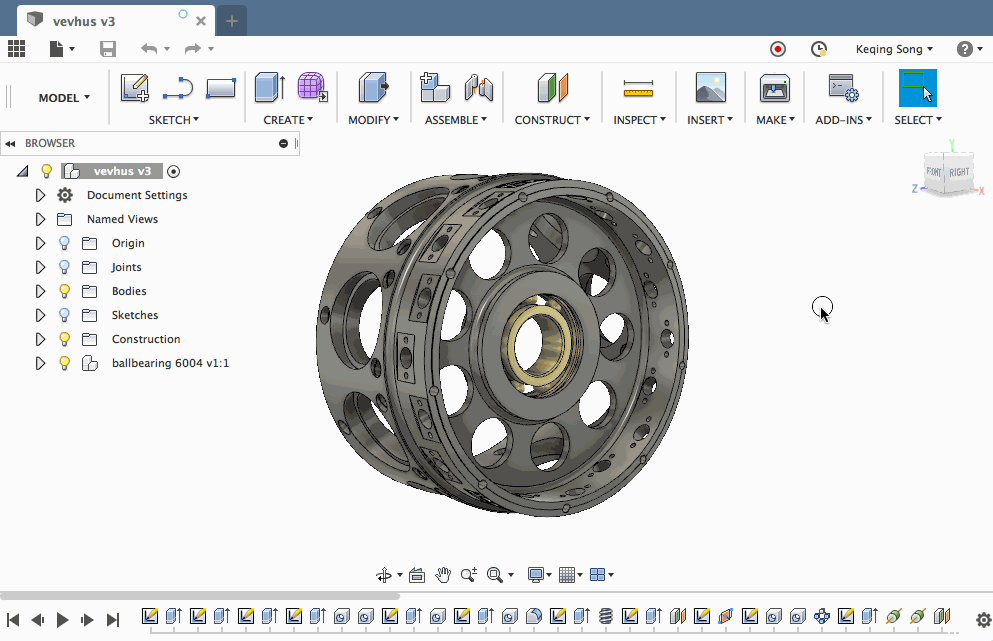
Invoking Create Derive is like pushing the whatever you want to derive into something else. It will give you the options to select the part you can like to “derive” out. That’s not all; you can also decide whether you want to that derived part to become a new design, or be placed in the existing one.
If you select the option where it will become a new design, you can go another level deeper and tell it to either be at the root level, or be a component under the root level.

*Protip: How you select your part determine what gets included in your selection
There is a subtle difference between how you select the part, and being aware of this can save you a lot of time. Derive has the ability to include bodies, components, as well as their related sketches and parameters.
Selecting in Canvas = bodies only
If you select your part by clicking the geometry in the canvas, you are just selecting the part itself, without any reference .
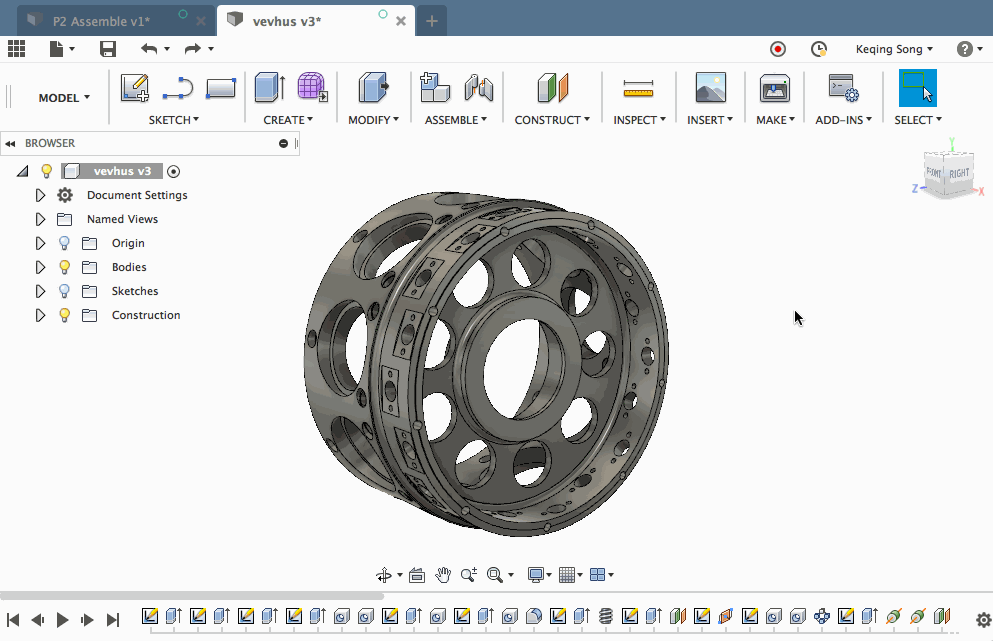
Selecting from Browser = bodies, sketches, joints
If you select your by clicking on the entity in the browser, that you are selecting the part as well as its related sketches and joints.
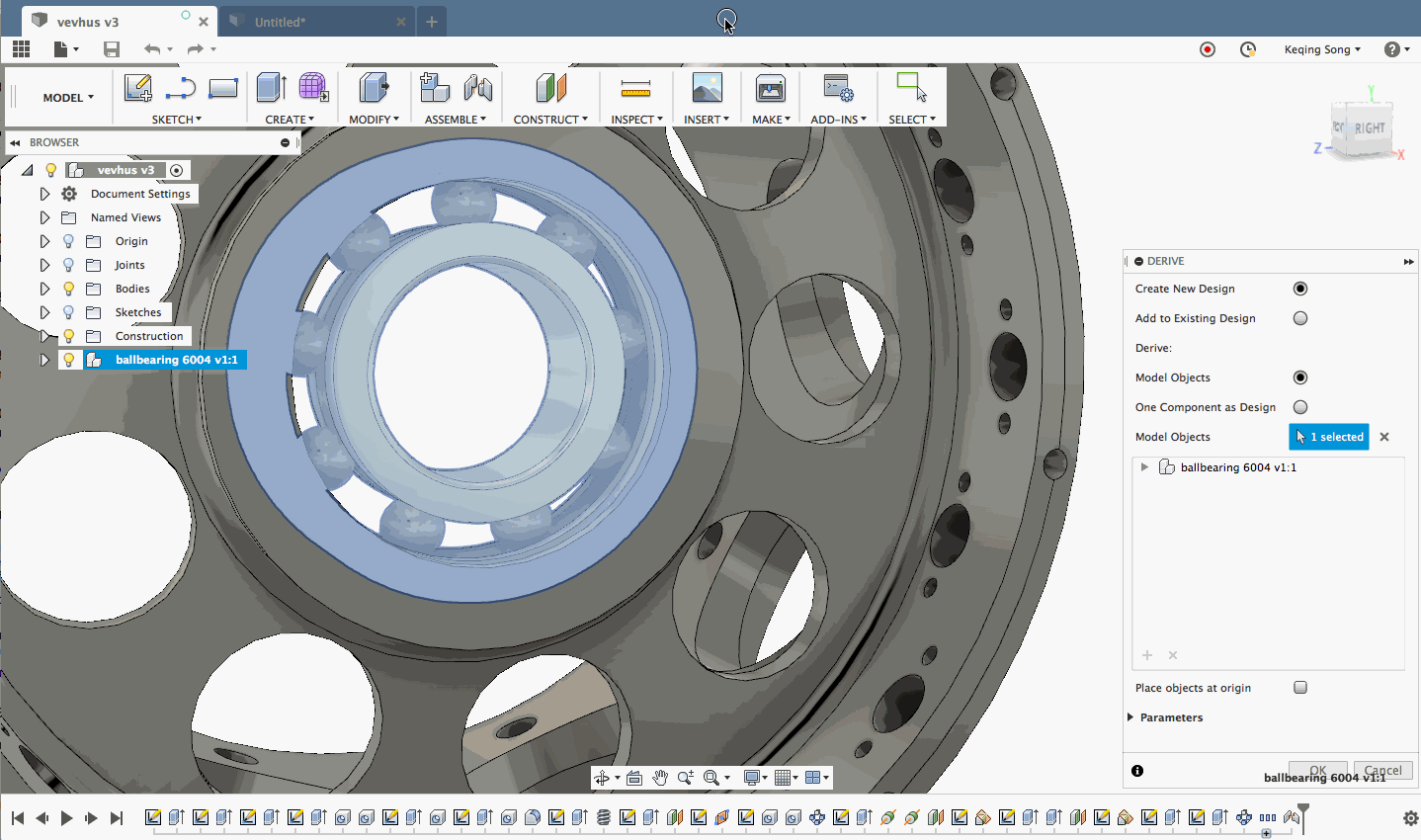
In short, Derive enables your team to be more flexible, gives you more control over the task at hand, and saves you all the trouble of getting a part updated due to changes made upstream. There are so many other examples out there where Derive can help you, and we’d love to see you put this functionality into use and hear about your experiences.

We’ve talked the talk, and now we’re walking the walk. Previously the Fillet command felt clumsy when you wanted to fillet multiple edges with different radii for each set of edges – there wasn’t a good way to do in a one clean sweep. We also had a separate Rule Fillet command, which felt disconnected from the Fillet toolset.

Now the Fillet command has been improved to support multi-selections, different radius values for your selection groups, tangency types, Radius types, and Corner types, all in one. Oh yeah, Rule Fillet is now also part of this command: you can select a face of a your part and it’ll fillet the edges all at once.


If your Generative Design output or T-Spline bodies have bumps/superfluous geometry that you’d like to get rid of, Fusion 360 now has a tool called Smooth that lets you do exactly that. You can find it in the Sculpt environment under the Modify drop-down menu. Protip: the Smooth tool works well on surfaces with a high frequency of bumps (like really bumpy). If the face you’re trying to smooth only have a few bumps, it may not be as useful. We’ll continue to improve on its performance in future updates.


Back in July, Jeff Strater posted in the forum asking for some feedback around some Sketch Projection enhancements we’ve been thinking about. We’ve been inundated with positive comments, and confirmed that we were on the right track. This update includes a number of improvements to Sketch Projections worthy of jumping for joy.
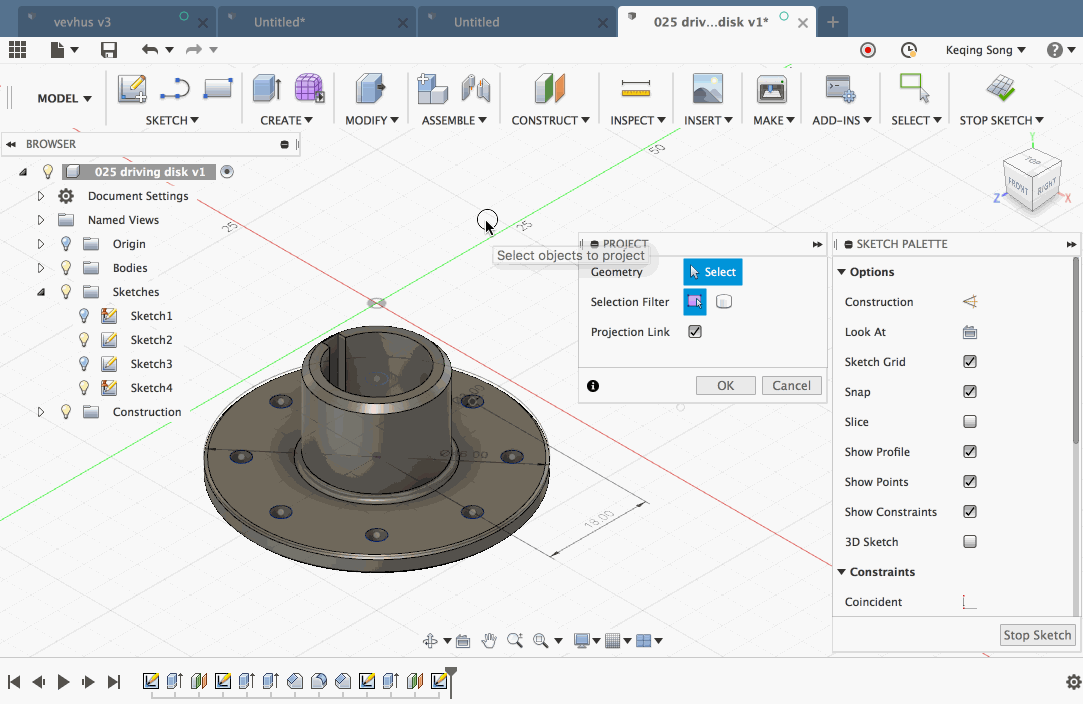

We were told that if the name of the file you were trying to export had a period followed by some text and then the extension, Fusion 360 omitted whatever that was between the period and the extension (for example, 3d.print.f3d would end up being 3d.f3d, omitting the word “print”). Well that’s embarrassing – sorry about that.






As mentioned in our roadmap update posted no long ago, we’re introducing a new preview called the Manufacture Workspace. You can turn it on, along with the Machine Configurations Preview, in the Preview section of your preferences.


For those of you who live in the CAM workspace, you’ll notice right away that the toolbar has a lot less tools shown upfront. Don’t fret – this doesn’t mean that we removed a bunch of tools, it just means that they currently don’t pertain to the task at hand. This the Manufacture workspace includes subtractive as well as additive workflows, the first step to get started is to create a setup.

In most cases, the toolbar in Fusion 360’s workspaces are set up in a way where the first tool at the left is the tool to start a workflow with. In Model, it’s Sketch. In Manufacture, it’s Setup. If you’re doing subtractive manufacturing, this will be the exact same workflow as you were used to. Create a setup, set your Z, select the tools, edit your parameters, and then pick the strategy for the right job.
If you’re doing advanced additive manufacturing, this is where things get awesome. In the Machine Configuration selection dialog in your job setup workflow, you now have the option to select Additive as a manufacturing option.

Additive metal manufacturing opens up a new world of strategies, enabling you to select the appropriate machine configuration, re-orient/reposition your part to the print bed just like any other 3D Print job, and give it the necessary supports for the print to be successful.


Once you’ve selected the support that best suits your part, you’ll get a preview of the supports right away.

The best part of about having additive and subtractive capabilities in one workspace is that you can manage both strategies all in the same experience, without needing to jump through hoops to get one section of the part printed and another section of the part drilled, like part above, for example.
What an update! There are a lot of new functionality being introduced this time around, and we’re already working on projects for the next update. In the meantime, give these workflows a try and let us know what you think, how they benefit your day-to-day processes, and how we can improve them for the future. We’re also planning on a few deep dive articles to help you get a better understanding of the new workflows available, best-practices on how to approach them, and how to think differently. Keep an eye out for them on our blog. Again, thanks for the continued support and we look forward to hearing from you!
Keqing and the Fusion 360 Team
By clicking subscribe, I agree to receive the Fusion newsletter and acknowledge the Autodesk Privacy Statement.
Success!
May we collect and use your data?
Learn more about the Third Party Services we use and our Privacy Statement.May we collect and use your data to tailor your experience?
Explore the benefits of a customized experience by managing your privacy settings for this site or visit our Privacy Statement to learn more about your options.